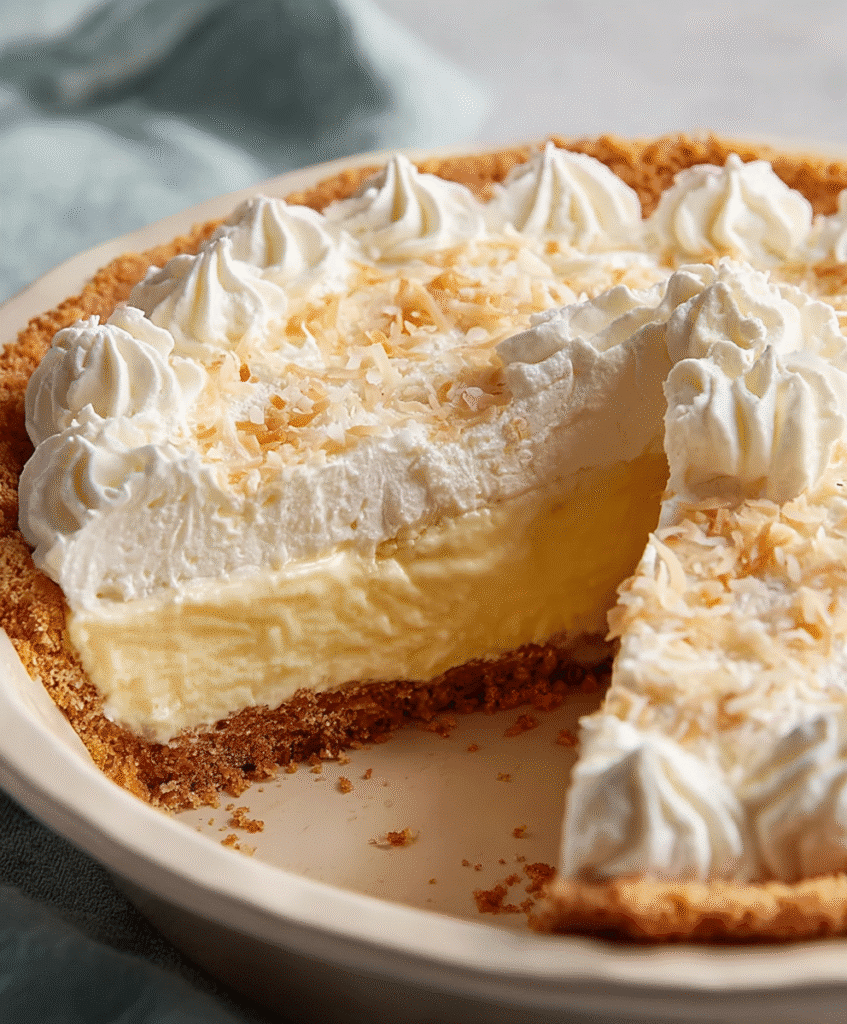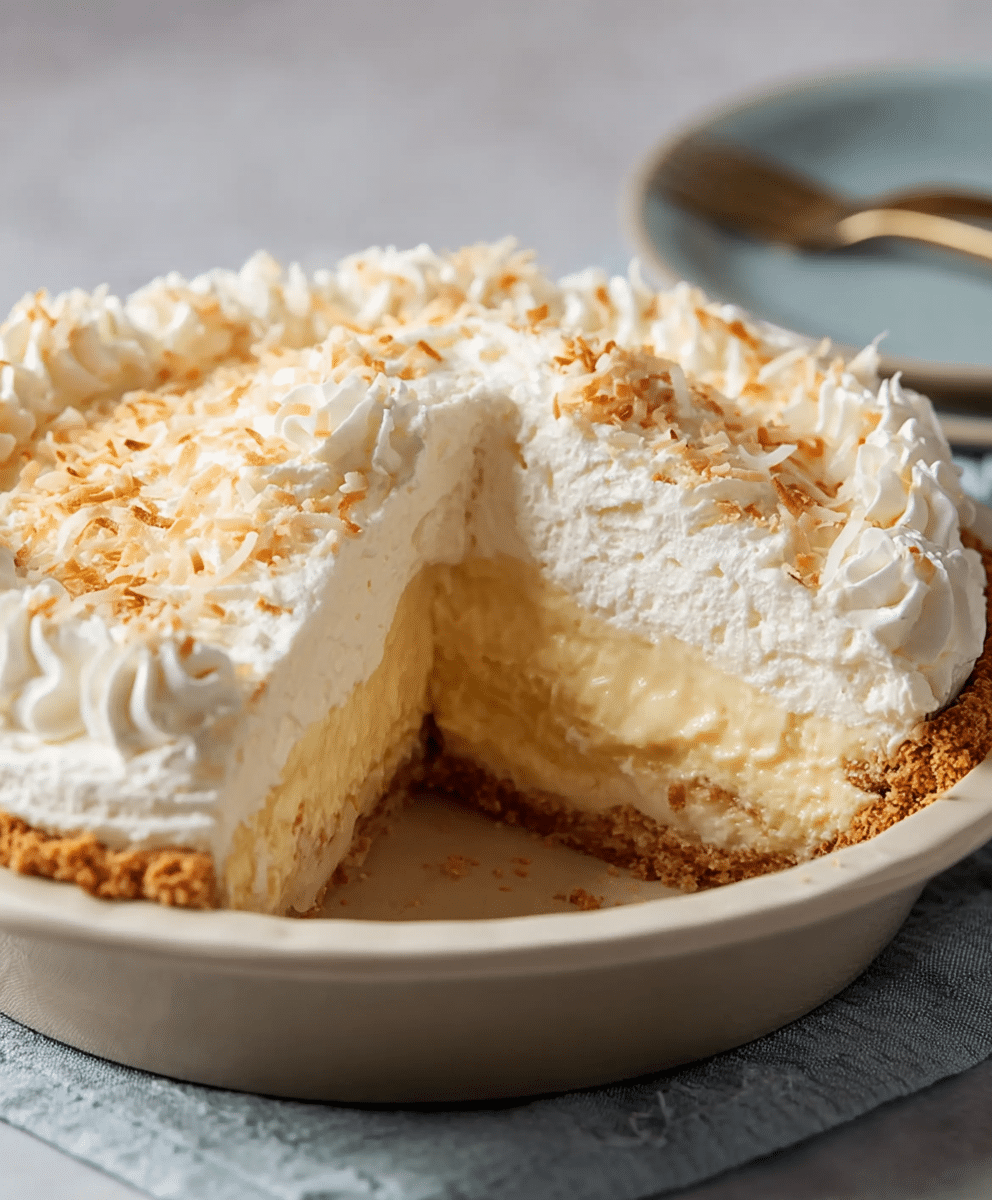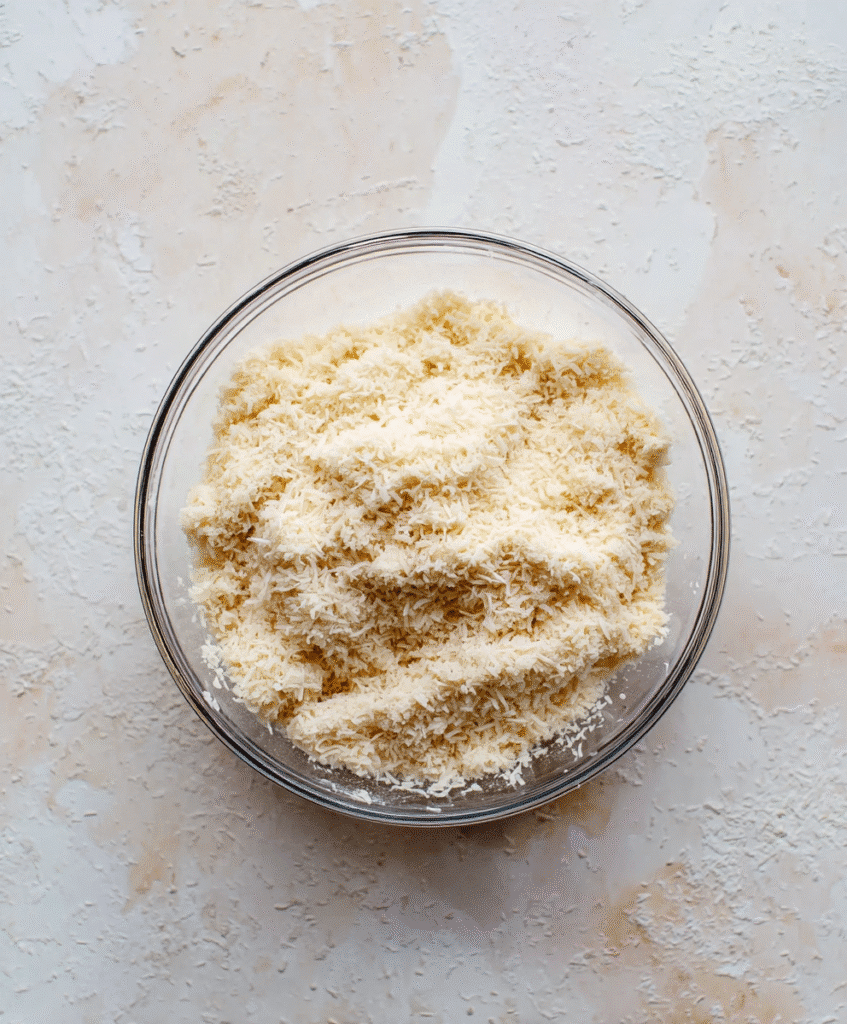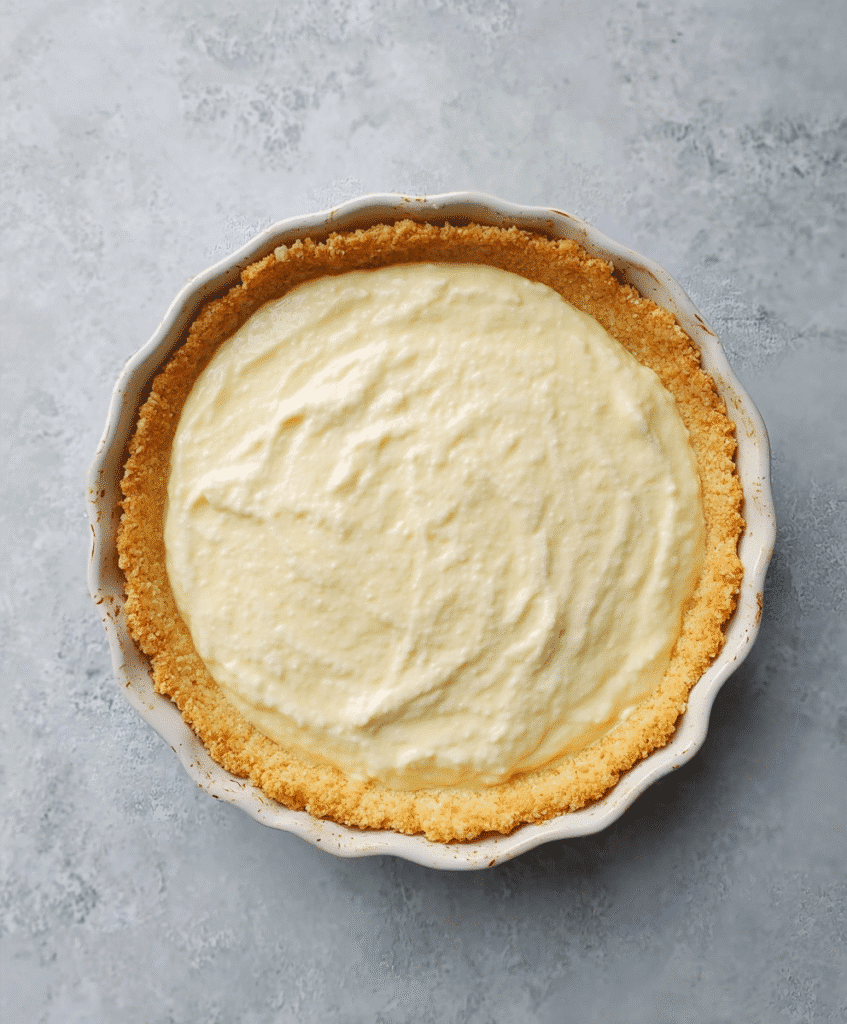Gluten-free coconut cream pie was one of those desserts that always felt like a little slice of magic growing up. I remember the way my grandmother used to make her version—lush, creamy filling, a toasted golden top, and that unmistakable tropical scent of coconut drifting through the house. But back then, no one even knew what gluten-free meant. Fast forward to today, and not only is it possible to make this dreamy dessert gluten-free, but it’s also just as rich, decadent, and indulgent as ever—without sacrificing taste or texture.
In this article, we’re diving deep into everything you need to know to master the perfect gluten-free coconut cream pie. From creating a macaroon-style crust that skips the flour entirely, to crafting a silky, dairy-optional coconut custard filling, we’ve got every detail covered. Whether you’re baking for a celiac family member or simply looking to lighten up your desserts without losing that nostalgic bite, this pie brings all the joy of the classic—and then some.
Learn more about our creamy dessert lineup in this gluten-free ice cream cake recipe.
Now, let’s get into why this dessert holds such a special place in so many hearts.

Table of Contents
Table of Contents

Gluten-Free Coconut Cream Pie
Ingredients
Equipment
Method
- Preheat oven to 350°F and grease a 9-inch pie pan.
- Make crust: Mix coconut, egg whites, and melted butter. Press into the pan.
- Bake crust: 20–25 minutes until golden brown. Cool completely.
- Prepare filling: In saucepan, whisk flour, sugar, milk, egg yolks. Stir over medium heat until thick.
- Boil for 1 minute, remove from heat, and stir in shredded coconut, vanilla, and butter.
- Pour custard into crust. Press plastic wrap directly on surface. Chill for 3 hours.
- Make topping: Beat whipping cream (or coconut cream) with powdered sugar and vanilla until stiff peaks form.
- Top pie with whipped cream just before serving. Optional: sprinkle toasted coconut on top.
- Serve chilled and enjoy!
Nutrition
Notes
- You can make the crust a day in advance to save time.
- Use full-fat coconut milk or coconut cream for the best results.
- Stabilize whipped cream with cornstarch if you plan to make it ahead.
- Always check that your coconut and dairy-free alternatives are certified gluten-free.
Tried this recipe?
Let us know how it was!Why Everyone Loves a Gluten-Free Coconut Cream Pie
What Makes Coconut Cream Pie Irresistible
A gluten-free coconut cream pie isn’t just a treat—it’s an experience. From the very first bite, the creamy coconut filling melts into the crisp, toasted crust, and the billowy whipped topping ties everything together. It’s the kind of dessert that makes you pause mid-conversation just to savor the flavor. The beauty of this pie lies in its simplicity: smooth, rich coconut custard, a golden crust made with sweetened shredded coconut, and a cool, fluffy finish that practically floats off the fork.
For those avoiding gluten, this dessert brings a sense of normalcy and indulgence that’s often hard to find. Unlike many gluten-free options that taste “off” or overly dense, this pie delivers authentic, old-school satisfaction—minus the gluten. The crust skips flour entirely and uses egg whites and coconut to bind and bake into a golden, chewy base that pairs perfectly with the silky custard.
Every layer of this gluten-free coconut cream pie complements the next, delivering contrast in texture and harmony in taste. It’s luscious without being overly sweet, and the natural tropical essence of coconut adds depth that elevates the entire dish.
Why Go Gluten-Free with Classic Desserts
Going gluten-free doesn’t mean giving up comfort food or family favorites—it just means getting creative in the kitchen. For many, including those with celiac disease or gluten sensitivity, desserts are the hardest part of the transition. That’s why recipes like this gluten-free coconut cream pie are game-changers.
Instead of replicating a traditional flour crust, this recipe reimagines it completely. The coconut macaroon crust isn’t just a workaround—it’s a feature. Crisped to golden perfection, it offers texture and taste that traditional crusts often lack. Paired with a custard thickened using gluten-free all-purpose flour and topped with either real whipped cream or dairy-free coconut whip, every component is thoughtfully designed to be both gluten-free and genuinely delicious.
This pie isn’t just “good for gluten-free”—it’s good, period. And that’s why it’s a must-have in your baking arsenal, especially if you love nostalgic desserts but need to avoid gluten. Whether it’s served at a holiday table or brought to a summer picnic, it never lasts long.
Ingredients for the Ultimate Gluten-Free Coconut Cream Pie
Choosing Gluten-Free Alternatives (Flour, Milk, Coconut)
When it comes to making a truly irresistible gluten-free coconut cream pie, choosing the right ingredients is everything. The good news? You don’t need specialty items that break the bank. Most of the components can be found at any well-stocked grocery store—just be sure to check labels carefully for hidden gluten sources.
Flour: For the custard filling, a high-quality gluten-free all-purpose flour is your best bet. Brands like Pillsbury or King Arthur offer blends that mimic the texture of wheat flour without compromising flavor. These flours thicken the coconut custard beautifully and hold up during chilling.
Milk: You can use regular whole milk for a rich, traditional flavor, or opt for a dairy-free version like unsweetened almond, cashew, or full-fat coconut milk if you want the pie completely dairy-free. Full-fat coconut milk is especially popular in this recipe, as it enhances the tropical notes and creates a luxuriously creamy filling.
Coconut: Both the crust and filling rely on sweetened shredded coconut. Always check to ensure your shredded coconut is gluten-free, as some brands may use anti-caking agents or additives that contain gluten. Toasted coconut can also be used as a topping for extra crunch and visual appeal.

Must-Have Pantry Items and Substitutes
Building the perfect gluten-free coconut cream pie isn’t just about the main ingredients—it’s about the little touches that make everything come together.
Here’s a quick pantry checklist for this recipe:
| Ingredient | Purpose | Gluten-Free Tip |
|---|---|---|
| Egg Whites | Binds crust | Naturally GF |
| Granulated Sugar | Sweetens custard | Always check for cross-contamination |
| Butter or Dairy-Free Spread | Adds richness | Use Smart Balance for dairy-free |
| Vanilla Extract | Boosts flavor | Look for gluten-free certified versions |
| Cornstarch | Stabilizes whipped topping | Naturally gluten-free |
| Powdered Sugar | Sweetens whipped topping | Gluten-free if not mixed with wheat starch |
Don’t forget whipped cream! You can use regular heavy whipping cream or, for a dairy-free version, opt for chilled coconut cream whipped with powdered sugar and vanilla. Both versions give your pie that dreamy, cloud-like topping that makes it unforgettable.
By choosing carefully and checking ingredients, you’ll build a pie that’s not just safe for gluten-free eaters—but one that everyone will beg for seconds of.
Check out our gluten-free banana pudding for another creamy dessert that’s rich, nostalgic, and celiac-friendly.
Step-by-Step: Making the Coconut Macaroon Crust
How to Get the Perfect Texture Without Traditional Dough
The crust of any pie can make or break the dessert, and with a gluten-free coconut cream pie, there’s no room for compromise. This pie doesn’t just skip the gluten—it skips traditional flour crusts altogether. Instead, you get a crispy, chewy, flavor-packed base made with sweetened shredded coconut, egg whites, and a bit of butter or dairy-free spread. That’s it—simple, delicious, and 100% gluten-free.
What makes this crust shine is its toasted flavor and texture contrast. When baked properly, it delivers a golden, slightly crisp shell that supports the creamy coconut custard beautifully. It’s a smart choice for anyone who wants a flourless crust that tastes like a tropical macaroon.
Even better, there’s no rolling, chilling, or kneading involved. You just mix, press, and bake. This shortcut doesn’t sacrifice quality—in fact, it enhances the pie by adding another layer of coconut flavor to your gluten-free coconut cream pie.

Tips for a Crisp and Golden Coconut Crust
To start, preheat your oven to 350°F and lightly grease a 9-inch pie pan. In a large bowl, combine shredded coconut, melted butter (or Smart Balance for dairy-free), and egg whites. Press this mixture evenly into the bottom and up the sides of the pan. Make sure it’s tightly packed to form a solid, sturdy crust.
Bake for 20–25 minutes, keeping a close eye during the last 5 minutes. Coconut browns quickly, and that golden color is exactly what gives your gluten-free coconut cream pie its warm, nutty base. Let the crust cool completely before filling—it ensures the custard sets properly and doesn’t become runny.
This no-flour crust isn’t just for convenience; it actually enhances the overall flavor. Every bite delivers crispy coconut crunch paired with the silky smooth custard to come. And unlike traditional doughs, it won’t fall apart or taste bland.
If you’re preparing the crust in advance, simply cover it and store at room temperature. It holds beautifully and makes pie assembly fast and stress-free the next day.
Check out our gluten-free cherry pie for another fruity take on flourless crusts.
Crafting a Silky, Gluten-Free Coconut Custard Filling
Cooking the Custard to Perfection
The creamy filling is the star of every gluten-free coconut cream pie, and when done right, it melts on your tongue with the perfect balance of richness and coconut flavor. This custard isn’t complicated, but it demands care. With the right mix of gluten-free ingredients and a steady hand, you’ll create a smooth, sliceable filling that never fails to impress.
Start with gluten-free all-purpose flour, sugar, milk, and egg yolks. Whisk them in a medium saucepan until blended. Cook over medium heat, stirring constantly, until the mixture thickens. The moment it begins to boil, time it for exactly one minute to fully activate the thickening power of your flour. This is crucial to avoid a runny pie.
Once off the heat, stir in shredded sweetened coconut, vanilla extract, and butter (or dairy-free alternative). The warmth helps the flavors meld and the texture settle into a silky, creamy base—ideal for layering into your gluten-free coconut cream pie.
Flavoring and Thickening with Gluten-Free Staples
Gluten-free baking comes with its quirks, but you’ll get great results if you use the right flour blend—preferably one with xanthan gum to provide structure. This ensures the custard sets up beautifully after chilling and won’t collapse when sliced.
Use full-fat coconut milk if you want the richest texture. Avoid light versions—they tend to make the custard thin and watery. For added smoothness, press plastic wrap onto the surface before chilling. This prevents skin from forming and locks in moisture.
When ready to serve, your filling should hold its shape while remaining soft and velvety. The best part? Every bite of this gluten-free coconut cream pie delivers tropical warmth, rich vanilla undertones, and just the right touch of sweetness.

Topping It Off: Whipped Cream vs Coconut Cream
Dairy-Free Whipped Topping Options
A gluten-free coconut cream pie wouldn’t be complete without a thick, fluffy topping to crown that silky custard. The good news? You’ve got options—and they’re all delicious.
If you enjoy dairy, classic whipped cream is the go-to. Made with heavy whipping cream, a bit of powdered sugar, and pure vanilla extract, it gives this pie that rich, cloud-like layer everyone expects. Just whip until stiff peaks form, and you’re ready to pipe or spread it on top.
But for those avoiding dairy, coconut cream steps in as the perfect alternative. Chill a can of full-fat coconut cream overnight, scoop out the thick top layer, and whip it with powdered sugar and vanilla. It creates a smooth, billowy topping with a light coconut finish that pairs beautifully with the filling.
This makes your gluten-free coconut cream pie not only gluten-free but also dairy-optional—perfect for guests with multiple dietary needs.
Stabilizing Tips and Serving Suggestions
Whipped cream can deflate quickly, especially on warm days. To stabilize your topping, add a spoonful of cornstarch while mixing. This helps it hold its shape longer without changing the flavor.
Whether you go with dairy or coconut whip, chill the topping before applying it to the pie. A cold whip spreads easier and sticks better to the surface. Just before serving, pipe or spread a generous layer over the chilled filling and finish it off with toasted shredded coconut for a crunchy, golden touch.
Your gluten-free coconut cream pie is now complete—layers of texture, bold flavor, and dreamy creaminess in every bite. And whether you’re serving it at a holiday table or summer picnic, this pie will always steal the show.

Serving and Storing Your Coconut Cream Pie
Best Practices for Chilling, Slicing, and Presenting
Once your gluten-free coconut cream pie has been assembled with its custard filling and whipped topping, it’s time to let it chill—literally. This pie truly shines when it’s served cold, allowing all the layers to set, firm up, and fuse their flavors together. After assembling, place your pie in the refrigerator for at least 3 hours, though overnight is even better.
When it’s time to serve, make sure you’re using a sharp knife for clean slices. Wipe the blade between cuts to preserve those beautiful layers of coconut custard and whipped cream. A metal pie server works best to lift slices without damaging the crust.
If you want to impress your guests, top each slice with a sprinkle of toasted shredded coconut or a few fresh berries. It adds a visual pop and another layer of taste that enhances the entire experience of this gluten-free coconut cream pie.
How Long It Keeps in the Fridge and Freezer
Proper storage is key to maintaining the texture and flavor of your pie. When kept covered in the refrigerator, your gluten-free coconut cream pie will stay fresh for up to 4 days. In fact, many say it tastes even better after the first day as the coconut flavor deepens and the custard settles more firmly.
Avoid freezing if you can. While the crust holds up well, the custard layer can separate and become grainy after thawing. If you must prep ahead, bake the crust and prepare the filling a day before, then assemble with the whipped topping the day you plan to serve it.
This pie is ideal for gatherings, potlucks, or just a cozy weekend treat. No one will believe it’s gluten-free, and you’ll probably need to make a second one next time!
Don’t miss our gluten-free banana nut bread muffins—they’re perfect for breakfast or dessert!

Making It Dairy-Free and Vegan (Optional)
Ingredient Swaps That Keep It Creamy
If you’re following a dairy-free or even vegan lifestyle, you don’t have to miss out on the deliciousness of a gluten-free coconut cream pie. With a few easy swaps, this dessert transforms beautifully—keeping that dreamy texture and bold coconut flavor intact.
To begin, substitute the regular milk in the custard with full-fat coconut milk or unsweetened almond milk. Full-fat coconut milk not only enhances the tropical vibe but also adds the richness needed to thicken your custard. Almond and cashew milk work too, though the result may be slightly lighter in texture.
Butter is another simple swap—just use Smart Balance or any plant-based butter alternative that’s certified gluten-free. When it comes to the topping, canned coconut cream is your best friend. Chill it overnight, scoop out the solid cream, and whip it with powdered sugar and vanilla. The result? A luscious, dairy-free topping that mimics traditional whipped cream with an extra coconut twist.
These adjustments allow your gluten-free coconut cream pie to be 100% dairy-free and optionally vegan, as long as you also use an egg-free custard base (such as cornstarch-thickened non-dairy milk with a touch of agar agar for structure).
Tips for Maintaining Flavor and Structure
Going dairy-free shouldn’t mean giving up structure or richness. Use stabilizers like cornstarch or tapioca starch in the custard to ensure it sets properly without gelatin or eggs. Add a little extra shredded coconut if needed—it brings both texture and flavor, helping the pie hold up beautifully in the fridge.
Also, make sure your coconut cream topping is whipped cold and applied to a fully chilled custard layer. This keeps the topping from sinking or separating.
With just a few thoughtful substitutions, your gluten-free coconut cream pie becomes allergen-friendly and crowd-approved. Vegan guests will love it—and so will everyone else.
Try our fabulous Italian bread (gluten-free) for a savory pairing option at your next gathering.
More Gluten-Free Dessert Recipes You’ll Love
Complementary Gluten-Free Treats to Try Next
Once you’ve mastered the gluten-free coconut cream pie, there’s no turning back—you’ll want more decadent, no-compromise desserts in your rotation. Luckily, the world of gluten-free baking is full of creative, satisfying options that are just as good (if not better) than their traditional counterparts.
If you loved the creamy custard base of the coconut pie, you’ll probably enjoy a layered dessert like a banana pudding. Our gluten-free banana pudding delivers rich vanilla flavor with a velvety texture and a nostalgic twist.
For fruit lovers, a gluten-free cherry pie offers the perfect combination of sweet and tart wrapped in a tender, flaky crust—another must-try for gluten-free bakers.
If you’re a fan of creamy and cool desserts, our gluten-free ice cream cake is a showstopper at parties. It combines cold layers of cake and ice cream in a totally gluten-free format that rivals any bakery option.
And for something a little more unique, our pink salt trick article dives into how a pinch of Himalayan salt can enhance the flavor profile of your baked goods—including, yes, your gluten-free coconut cream pie.
Links to Seasonal and Crowd-Pleasing Options
Your dessert game doesn’t need to stop at pies. From muffins and cakes to clafoutis and custards, there’s a world of gluten-free treats waiting to be explored.
Looking for something elegant yet easy? Our blueberry almond clafoutis is a French-inspired dessert that’s naturally gluten-free, light, and full of flavor.
As you experiment with these ideas, keep in mind that the key to great gluten-free baking is balance—just like you found in your gluten-free coconut cream pie. The right mix of ingredients, structure, and taste ensures every dessert is a success.
Conclusion
There’s something truly special about making a dessert that everyone at the table can enjoy—and this gluten-free coconut cream pie proves that dietary-friendly can still mean rich, creamy, and indulgent. With its toasted coconut crust, silky custard center, and fluffy whipped topping, this pie strikes the perfect balance between nostalgic flavor and modern, allergen-conscious baking.
Whether you’re serving it at a family gathering, holiday dinner, or just as a weekend treat, this pie delivers on taste, texture, and wow factor. And the best part? It’s simple to prepare, easy to customize, and even easier to love.
Looking for inspiration? Try our gluten-free chocolate cupcakes to round out your dessert table with something rich and fudgy.
Keep baking, keep exploring, and keep sharing slices of joy—one forkful at a time.
Follow us on Facebook & Pinterest for more gluten-free dessert ideas and community fun!
FAQs About Coconut and Gluten-Free Baking
Can celiacs eat coconut cream?
Yes, celiacs can safely eat coconut cream—as long as it’s pure and not cross-contaminated. Most canned coconut cream is naturally gluten-free, but always double-check the label for added thickeners or flavorings. For your gluten-free coconut cream pie, opt for unsweetened, full-fat coconut cream with no additives. Brands labeled “gluten-free” are the safest choice.
Is coconut cream gluten-free?
Absolutely. Coconut cream is derived from the flesh of the coconut and is naturally free of gluten. However, manufacturing practices can differ. Some brands may produce it in facilities that also process wheat, so celiacs should always look for certified gluten-free products. When used properly, coconut cream adds both richness and smoothness to a gluten-free coconut cream pie, especially when used in the custard or whipped topping.
Why is whipped cream not gluten free?
Not always. While shredded coconut should be gluten-free by nature, some brands coat it with preservatives or anti-caking agents that may contain gluten or be processed on shared equipment. Always read the labels, especially for sweetened versions. For your gluten-free coconut cream pie, stick with certified gluten-free shredded coconut to avoid any risk.
These details may seem small, but they’re crucial in ensuring your gluten-free coconut cream pie is safe, delicious, and worry-free for everyone at the table.

1 thought on “The Best Gluten-Free Coconut Cream Pie Recipe for Creamy Dessert Lovers”